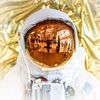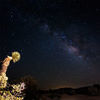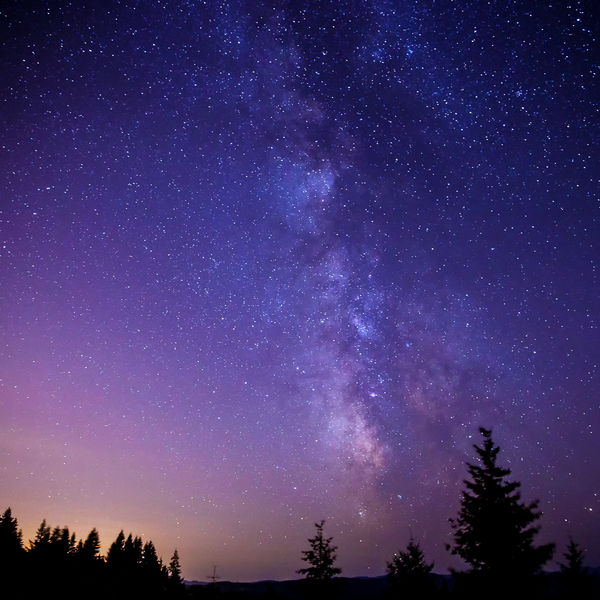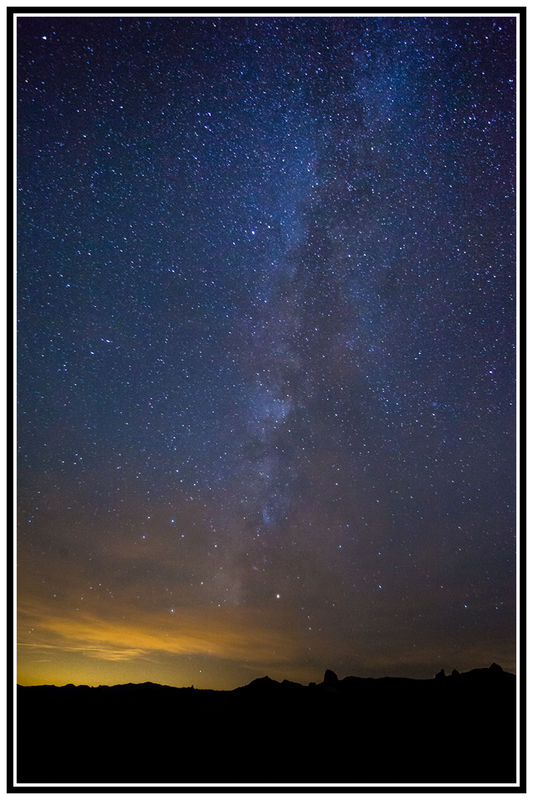Star Photography - Newbie
Aug 16, 2015 17:39:48 #
I'm planning to shot the stars tonight. I don't have the best equipment for this type of photography, but will a Canon 6D and a 24-70L f/2.8 make this even possible? Am I better off with my nifty fifty (50mm f/1.8) since it's a bit faster? Your experience is welcome.
Aug 16, 2015 19:14:24 #
I would like to introduce you to the Astronomical Photography Forum at http://www.uglyhedgehog.com/s-109-1.html .
The top-posted FAQs and tutorials will answer many of your questions, and this is the forum to ask specific Astro-Photography questions.
The top-posted FAQs and tutorials will answer many of your questions, and this is the forum to ask specific Astro-Photography questions.
Aug 18, 2015 12:03:23 #
Your equipment is more than adequate for your endeavor. :-)
Both the 24-70 and 50 will give you great results, just different.
The wider angle of the 24mm lens will give you a more expansive view, but the 50mm will allow you to use a shorter shutter speed to capture the same amount of light. SO you can prevent star trailing.
The high ISO performance of your camera easily makes short work of faint objects!
GT
Both the 24-70 and 50 will give you great results, just different.
The wider angle of the 24mm lens will give you a more expansive view, but the 50mm will allow you to use a shorter shutter speed to capture the same amount of light. SO you can prevent star trailing.
The high ISO performance of your camera easily makes short work of faint objects!
GT
mdorn wrote:
I'm planning to shot the stars tonight. I don't have the best equipment for this type of photography, but will a Canon 6D and a 24-70L f/2.8 make this even possible? Am I better off with my nifty fifty (50mm f/1.8) since it's a bit faster? Your experience is welcome.
Aug 18, 2015 12:17:11 #
GTinSoCal wrote:
Your equipment is more than adequate for your endeavor. :-)
Both the 24-70 and 50 will give you great results, just different.
The wider angle of the 24mm lens will give you a more expansive view, but the 50mm will allow you to use a shorter shutter speed to capture the same amount of light. SO you can prevent star trailing.
The high ISO performance of your camera easily makes short work of faint objects!
GT
Both the 24-70 and 50 will give you great results, just different.
The wider angle of the 24mm lens will give you a more expansive view, but the 50mm will allow you to use a shorter shutter speed to capture the same amount of light. SO you can prevent star trailing.
The high ISO performance of your camera easily makes short work of faint objects!
GT
Thank you. I followed a tutorial online, and the images turned out okay. Here is one taken two nights ago...
24mm, f/2.8, 20s, ISO 3200
Taken at 11pm. Still some light pollution in the lower left of the image. Nik's Define did an okay job with the noise. Didn't have a very interesting foreground, but I took what I could get for a last minute outing.
Any other tips with post processing would be helpful. Thanks.
Aug 19, 2015 23:34:14 #
So you mention "light pollution"? How close were you to city lights?
Aug 19, 2015 23:48:38 #
LoneRangeFinder wrote:
So you mention "light pollution"? How close were you to city lights?
I would say maybe 15 miles as the crow flies? Total guess.
Aug 20, 2015 00:00:49 #
mdorn wrote:
I would say maybe 15 miles as the crow flies? Total guess.
Thanks. I've been thinking of visiting Crown Point.
Aug 20, 2015 08:50:38 #
I thought I'd give an example of how powerful light pollution can be.
The glow in this image is Los Angels, from over 200 miles away.
The light is just barely visible to the naked eye, but really becomes apparent in photos! :-)
GT
The glow in this image is Los Angels, from over 200 miles away.
The light is just barely visible to the naked eye, but really becomes apparent in photos! :-)
GT
LoneRangeFinder wrote:
So you mention "light pollution"? How close were you to city lights?
Aug 20, 2015 10:47:51 #
GTinSoCal wrote:
I thought I'd give an example of how powerful light pollution can be.
The glow in this image is Los Angels, from over 200 miles away.
The light is just barely visible to the naked eye, but really becomes apparent in photos! :-)
GT
The glow in this image is Los Angels, from over 200 miles away.
The light is just barely visible to the naked eye, but really becomes apparent in photos! :-)
GT
You seemed to have taken a number of these, so I'd like to pick your brain.
I've seen conflicting information regarding what to use as a base iso for star photography. It seems to me that there are two intents in this type of photography: capture the Milky Way (or Southern Cross if you are in the southern hemisphere?); capture star trails with some prominent/significant reference point from the horizon, e.g. a Joshua tree, etc.
My question is this: for star trails the materials I've read suggest a base iso as low as possible, perhaps 100, with multiple images @20sec shutter durations and a relatively wide open aperture. These would later be stacked. Conversely, images of the Milky Way would be a single image with a high iso, 3200 for example, and a relatively wide open aperture-- and again @ 20 seconds.
Acknowledging that these are starting points for exposures, are these assumptions correct?
Thank you, Allen
Aug 20, 2015 11:33:28 #
Hi Allen,
You've nailed it!
To get star field photos you want to get as much light as fast as you can to prevent trailing. I start my exposure at ISO 6400 and slowest shutter I can get away with.
I will lower the ISO if I can from there.
For star trails, you just want the I SO that will register the stars you want to capture. I will often use high I SO for star trail shots because I can also stack them for star field shots.
I hope I didn't confuse the issue 😊
GT
You've nailed it!
To get star field photos you want to get as much light as fast as you can to prevent trailing. I start my exposure at ISO 6400 and slowest shutter I can get away with.
I will lower the ISO if I can from there.
For star trails, you just want the I SO that will register the stars you want to capture. I will often use high I SO for star trail shots because I can also stack them for star field shots.
I hope I didn't confuse the issue 😊
GT
LoneRangeFinder wrote:
You seemed to have taken a number of these, so I'd... (show quote)
Aug 20, 2015 13:24:17 #
GTinSoCal wrote:
Hi Allen, br You've nailed it! br To get star fiel... (show quote)
Thanks for the confirmation. It's just turned overcast here and we need the rain, so I won't complain. Do you think I need a wide angle zoom with a constant f/2.8?
Aug 21, 2015 12:11:52 #
Based on the lenses you already have, I would play with those and see if you can find a wide prime lens.
The 24-70 will do a great job, although not ultra wide, it does have a great field of view.
The fast 50mm makes a panorama of the skies a possibility.
I've done a couple, meant to on the trip to Joshua Tree, but got sidetracked by everything else SQUIRREL! :-D
My wife and I are heading to dark skies next month, maybe I'll remember then...
Congratulations on the rain!
I hope it helps with all the wildfires, :-/
GT
The 24-70 will do a great job, although not ultra wide, it does have a great field of view.
The fast 50mm makes a panorama of the skies a possibility.
I've done a couple, meant to on the trip to Joshua Tree, but got sidetracked by everything else SQUIRREL! :-D
My wife and I are heading to dark skies next month, maybe I'll remember then...
Congratulations on the rain!
I hope it helps with all the wildfires, :-/
GT
LoneRangeFinder wrote:
Thanks for the confirmation. It's just turned overcast here and we need the rain, so I won't complain. Do you think I need a wide angle zoom with a constant f/2.8?
If you want to reply, then register here. Registration is free and your account is created instantly, so you can post right away.





